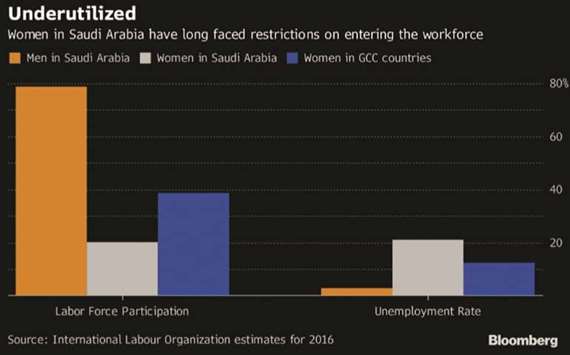Saudi Arabia has issued an order allowing women to drive, ending a long-standing policy that’s cast an unflattering light on the country’s treatment of women. It’s also a royal opportunity for global automakers eager to make further inroads into the Middle East’s biggest economy.
Saudi Arabia’s move to open up its auto market to about half of its 32mn total population will have a profound impact on vehicle demand, driving habits and even immigration patterns in a country where low-wage immigrants from Bangladesh and the Philippines often work as hired drivers.
Market leaders such as Toyota Motor Corp and Hyundai Motor Co, whose hulking sport utility vehicles are a fixture on Saudi roadways, may need to boost inventory of smaller models such as compacts and sedans for single working woman and female students, analysts say. On the flip side, app-driven, hired driver services like Uber Technologies could experience a drop in demand, as more women buy their own cars and get behind the wheel.
The change by King Salman bin Abdulaziz to issue driver’s licence to women starting June is the latest twist in a far larger effort to modernise and economically diversify the kingdom and lessen the economy’s dependence on oil.
Activists have repeatedly defied the ban, launching campaigns in which women have been filmed getting behind the wheel illegally. Saudi Arabia is the last country in the world to be lifting such restrictions.
“This is very exciting,” said Rebecca Lindland, an analyst with car-shopping website Kelley Blue Book, who worked in Saudi Arabia for more than two years. “It’s not going to be without obstacles, but it’s a huge step forward in terms of Saudi Arabia recognising the contributions that women can make to the economy.”
Japanese automaker Toyota accounted for 32% of the 676,000 vehicles sold in Saudi Arabia last year, while South Korea’s Hyundai ranked second with 24% market share, according to Jeff Schuster, an analyst with LMC Automotive. The country ranks 21st out of the 198 markets the researcher tracks, he said.
Toyota signed an agreement in March to conduct a feasibility study on local production in the kingdom. Nissan Motor Co and Hyundai were also in early stages of talks to open local plants, Asharq al-Awsat reported in June, citing an interview with a Saudi minister.
US manufacturers have a big opportunity if they can appeal to Saudi women’s tastes in fashion and technology with culturally sensitive marketing on television and on social media, said Nahed Eltantawy, a professor of journalism at High Point University in North Carolina, who has edited a book on women and media in the Middle East.
“Given that a lot of women will be travelling with kids, any advertising for family cars and vans to help with the children in the back would be helpful,” she said. “They need to offer diverse advertising that caters to the diverse women in Saudi Arabia.”
The country has a young and growing population. The median age is about 27, and only about 8% of the population is over 55, according to the CIA’s World Factbook.
Initially, the liberalisation move may create road safety issues as new, inexperienced drivers navigate Saudi Arabia’s streets, Lindland said. This could blunt the negative impact on ride-sharing services like Uber, at least at first.
Uber also could benefit from a new pool of female drivers for its car-hire service. The government also has a vested interest in seeing the company succeed – Saudi Arabia’s sovereign wealth fund is a major investor.
“We’re proud to have been able to provide extraordinary mobility for women in Saudi, and are excited by the economic opportunities this change could represent for them in the future,” Uber said in an e-mailed statement. About 80% of the company’s rides in Saudi Arabia are for women.
The other group that will see less demand are the thousands of private drivers who work directly for families, Lindland said. The policy change could shift the immigration patterns of the country if people no longer need the service, she said.
In a statement on King Salman’s order, Saudi Arabia said agencies have been instructed to expand licensing facilities and driver-education programmes to accommodate millions of new drivers. The challenges for some will be profound.
“You don’t really learn your way around because you don’t drive,” Lindland said, speaking from her own experience in the country. “You don’t pay attention because you’re in the back, or you’re in a shuttle bus. If you don’t drive, you don’t absorb.”

.


